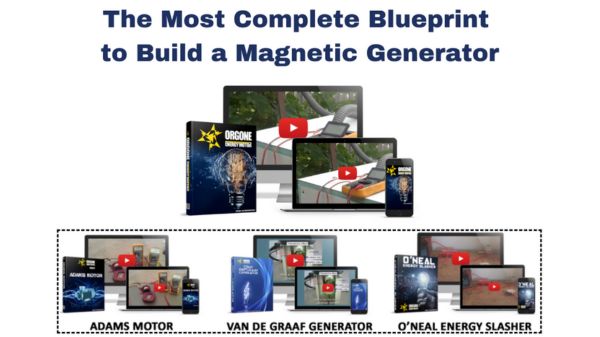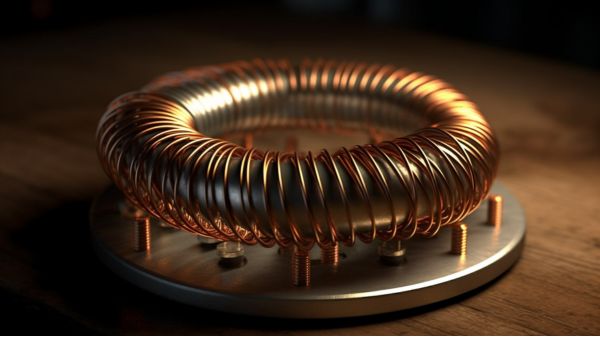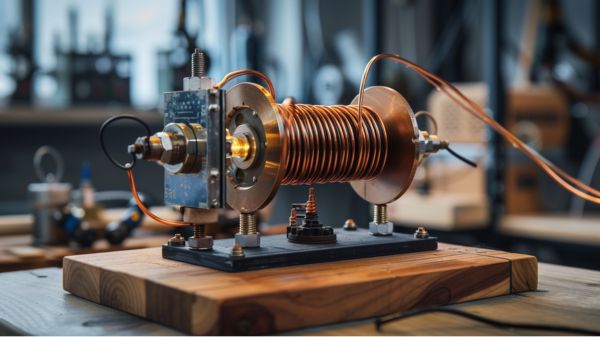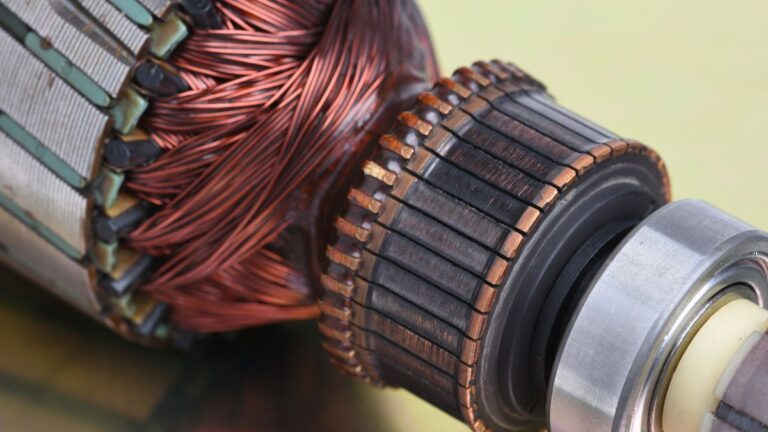14 Factors Affecting Magnetic Power Storage Installation Costs
Have you ever wondered about the factors that affect the installation costs of magnetic power storage?
Well, we have delved into this topic to uncover the truth behind the theory. In our exploration, we have discovered 14 key factors that play a significant role in determining the cost of installing magnetic power storage systems.
These factors include considerations such as the type and capacity of the system, location-specific requirements, site preparation and infrastructure costs, permitting and regulatory compliance expenses, and even the availability of tax incentives and government subsidies.
Join us as we unravel the intricacies of magnetic power storage installation costs and gain a deeper understanding of this fascinating field.
Location-Specific Installation Requirements
Typically, we frequently encounter location-specific installation requirements when implementing magnetic power storage systems. These requirements are crucial for the efficient functioning of SMES systems, which rely on superconducting coils to store energy. The size and shape of the coil depend on factors such as strain tolerance, thermal contraction, and Lorentz forces.
As the size of the SMES increases, toroidal coils become necessary for mechanical support. However, these larger installations come with higher costs. Land access, robust mechanical structures, and infrastructure requirements to contain the large Lorentz forces contribute to the overall installation cost. Additionally, cryogenics are needed to cool the superconductor, further adding to the technical challenges and expenses.
Future developments in superconductors with higher critical temperatures or room temperature superconductivity could potentially reduce installation costs by eliminating the need for refrigeration and reducing infrastructure requirements.
Type and Capacity of Magnetic Power Storage System
When considering the type and capacity of a magnetic power storage system, two key factors come into play: size and technology.
The size of the system directly impacts installation costs, as larger systems require more materials and resources for construction.
Additionally, the technology used in the system can affect installation expenses, as different technologies may have varying levels of complexity or specialized requirements.
Size Impacts Installation Costs
The size of the magnetic power storage system directly affects the installation costs. Larger energy storage systems, such as Superconducting Magnetic Energy Storage (SMES) systems, require more robust mechanical structures to contain the large Lorentz forces generated by the system. This increased need for structural support adds to the installation expenses.
Additionally, larger SMES systems often use toroidal coils, which can be more expensive due to the higher cost of superconductors, especially high-temperature superconducting (HTSC) coils. The need for cryogenics to cool the superconductors also impacts installation costs, with larger systems requiring more extensive cryogenic systems.
Furthermore, the size of the SMES installation influences installation costs through the land access and infrastructure requirements. Stable support and containment, as well as the availability of sufficient space, contribute to higher installation expenses.
Therefore, it’s important to consider the size of the magnetic power storage system when assessing installation costs.
Technology Affects Installation Expenses
Our choice of magnetic power storage technology significantly impacts the installation expenses, including the type and capacity of the system.
Different types of magnetic energy storage systems, such as Superconducting Magnetic Energy Storage (SMES), require specific components and materials, leading to variations in installation costs. One key factor is the type of superconducting coil used in the system.
High-temperature superconducting (HTSC) coils, although more expensive due to their higher cost and lower current density, offer advantages such as reduced cooling requirements. On the other hand, low-temperature superconducting (LTSC) coils are less expensive but require more elaborate cooling systems.
Additionally, the size and capacity of the system play a role in installation expenses. Larger SMES systems with toroidal coils can be more costly due to the need for robust mechanical structures and high-performance superconductors.
Site Preparation and Infrastructure Costs
When considering site preparation and infrastructure costs for magnetic power storage installations, two significant factors to consider are ground leveling expenses and utility connection fees.
Ground leveling is essential to ensure a stable foundation for the installation and may require excavation or land grading, adding to the overall project cost.
Additionally, utility connection fees for electricity, water, and other necessary utilities must be taken into account to ensure the proper functioning of the system.
These costs are crucial to consider when evaluating the feasibility and financial viability of implementing magnetic power storage systems.
Ground Leveling Expenses
An important factor in magnetic power storage installation costs is the ground leveling expenses associated with site preparation and infrastructure. Ground leveling is necessary to create a stable surface that can support the robust mechanical structure required to contain the large Lorentz forces in the system. These ground leveling expenses are influenced by the size of the magnetic power storage installation, as a larger installation requires more land access and leveling.
The infrastructure costs for the installation are also impacted by the need to level the ground for stable support and containment. Creating a stable surface is crucial for the installation of the superconductor and other components of the magnetic power storage system.
Therefore, careful consideration and planning of ground leveling expenses are essential to ensure the successful and cost-effective installation of magnetic power storage systems.
Utility Connection Fees
To continue our discussion on magnetic power storage installation costs, we need to address the utility connection fees that encompass site preparation and infrastructure costs. These fees are an essential aspect of installing magnetic energy storage (SMES) systems as they ensure the proper connection and integration of the system into the existing power system.
Here are four key factors that contribute to utility connection fees:
- Size of the SMES installation: Larger installations require more land access for infrastructure requirements, leading to higher costs for site preparation and infrastructure.
- Stable support and containment: The infrastructure for SMES installations, including stable support and containment, is crucial for the safe and effective operation of the system, resulting in additional costs.
- Cryogenics for cooling: The need for cryogenics in cooling the superconductor adds to the site preparation and infrastructure costs, as specialized equipment and materials are required.
- Fabrication of suitable cables: Fabricating bulk cables that can carry the high current required by SMES systems is a technical challenge and cost consideration during installation.
Considering these factors when estimating utility connection fees is crucial for accurately assessing the overall cost of implementing SMES technology for enhanced energy storage capacity in power systems.
Permitting and Regulatory Compliance Expenses
As we delve into the factors influencing the installation costs of magnetic power storage, it becomes evident that the expenses related to permitting and regulatory compliance pose a significant challenge.
Superconducting magnetic energy storage (SMES) systems, being advanced energy storage systems, are subject to various environmental and safety regulations. Compliance with these regulations adds to the overall expenses of installing SMES technology.
Obtaining permits for land access, construction, and operation of SMES installations can involve substantial costs and administrative efforts. Additionally, regulatory compliance requirements related to the use of cryogenic cooling systems and magnetic field management further influence the expenses associated with implementing SMES technology.
Zoning regulations and compliance with local building codes also impact the permitting and regulatory compliance costs.
Therefore, it’s crucial for stakeholders in the magnetic power storage industry to carefully consider and plan for these expenses to ensure smooth and cost-effective installation processes.
Labor and Contractor Fees
We factor in labor and contractor fees when considering the installation costs of magnetic power storage, taking into account the need for a robust mechanical structure to contain large Lorentz forces. These fees play a significant role in determining the overall cost of installing energy storage systems such as SMES (Superconducting Magnetic Energy Storage) systems.
Here are four key factors that impact labor and contractor fees in magnetic power storage installation:
- Land Access: The size of the installation requires significant land access, which affects the labor and contractor fees. Acquiring the necessary land and obtaining the required permits can add to the overall project cost.
- Infrastructure Requirements: The installation’s infrastructure, including stable support and containment, is crucial for the safe and efficient operation of the system. Meeting these requirements adds to the labor and contractor fees.
- Cryogenic Cooling: Superconducting magnets used in SMES systems require cryogenics for cooling. The installation and maintenance of the cryogenic infrastructure contribute to the labor and contractor fees.
- Skilled Labor: Installing and maintaining electrical energy storage systems like SMES requires skilled labor. The expertise and specialized knowledge of these professionals impact the labor fees associated with the installation.
Considering these factors, it’s essential to account for labor and contractor fees when estimating the installation costs of magnetic power storage systems.
Equipment and Material Costs
Continuing our discussion on factors affecting magnetic power storage installation costs, let’s now delve into the realm of equipment and material costs.
When it comes to SMES systems, equipment costs account for a significant portion of the overall installation expenses. In particular, the conductor and cold support are major cost components. These components are crucial for the efficient operation of the SMES system and contribute significantly to its energy storage capabilities.
Additionally, the cost of toroidal coils, which are responsible for storing the magnetic power, is dominated by the expense of superconductors. High-temperature superconductor (HTSC) coils, although offering improved performance, cost more than low-temperature superconductor (LTSC) coils due to their lower current density.
Furthermore, the robust mechanical structure required to contain the large Lorentz forces generated by the system adds to the overall equipment costs.
It’s important to carefully consider these factors when estimating material costs for magnetic power storage installations.
Electrical Connection and Grid Integration Expenses
When considering the electrical connection and grid integration expenses for magnetic power storage systems, several challenges and costs arise.
Grid integration presents challenges such as infrastructure requirements and stable support during installation.
Additionally, the cost of electrical connection includes expenses for power conditioning systems and the need for a robust mechanical structure to withstand large Lorentz forces.
These factors must be carefully analyzed and addressed to ensure efficient and cost-effective installation of magnetic power storage systems.
Grid Integration Challenges
Installing magnetic power storage systems involves overcoming grid integration challenges, including addressing electrical connection expenses and managing grid integration expenses. These challenges can significantly impact the overall installation costs of SMES (Superconducting Magnetic Energy Storage) systems.
Here are four key grid integration challenges that need to be considered:
- Power Conditioning Systems: SMES systems require power conditioning systems to convert the stored electric energy into a form that can be efficiently integrated with the grid. The expenses associated with these systems can be substantial.
- Stable Support and Containment Infrastructure: To ensure the safe and reliable operation of SMES systems, stable support and containment infrastructure must be in place. This infrastructure includes the necessary equipment and structures to house and protect the superconducting magnets.
- Cryogenics for Cooling: SMES systems rely on superconducting technology, which requires cryogenics for cooling the superconductor. The expenses associated with cryogenics add to the overall grid integration costs.
- Land Access: The installation of SMES systems requires significant land access. This is due to the space required for the equipment, infrastructure, and necessary safety measures. Acquiring and preparing the land can contribute to the grid integration expenses.
Cost of Electrical Connection
To address the cost of electrical connection, we must consider the expenses associated with integrating SMES systems into the existing electrical grid.
The cost of energy storage systems, such as SMES, includes not only the cost of the storage units themselves but also the cost of connecting them to the grid. This involves establishing a reliable electrical connection that allows for the seamless transfer of power between the SMES system and the grid.
Additionally, grid integration expenses encompass the costs of ensuring synchronization and stability between the SMES system and the grid. This includes the development of suitable infrastructure and support systems to contain and maintain the energy storage system.
The cost of superconducting wire used in SMES systems can also impact the overall electrical connection expenses. Higher power density and storage capacities of SMES systems require robust energy conversion mechanisms, which further contribute to the cost of electrical connection.
Transportation and Logistics Charges
We incur significant transportation and logistics charges for SMES installations due to the size and weight of components like the superconducting coil magnet and cryogenic system. These charges contribute to the overall magnetic power storage installation costs.
Here are four key factors that affect transportation and logistics charges for SMES installations:
- Size and weight of components: The superconducting coil magnet and cryogenic system are large and heavy, requiring specialized transportation methods and equipment. This adds to the logistics costs.
- Need for stable support and containment: SMES installations require stable support structures and containment systems to handle the large Lorentz forces. Transporting and installing these structures increases the transportation and logistics charges.
- Infrastructure requirements: Land access and stable support structures are essential for SMES installations. These infrastructure requirements contribute to the transportation and logistics costs.
- Cryogenics and bulk cable fabrication: The need for cryogenics to cool the superconductor and the challenges in fabricating bulk cable suitable for carrying current further impact the transportation and logistics charges.
Considering these factors, transportation and logistics charges play a significant role in determining the overall cost of magnetic power storage installations.
Maintenance and Servicing Costs
One key factor affecting maintenance and servicing costs for magnetic power storage installations is the ongoing management of the cryogenic cooling system. The cryogenic cooling system is crucial for superconducting materials used in SMES systems, as it helps to maintain the superconducting state and ensure optimal performance.
However, the maintenance of such a system can be costly. It requires regular monitoring and maintenance to ensure that it’s functioning properly and to address any issues that may arise. This includes checking for leaks, monitoring the temperature and pressure, and conducting routine maintenance on the cooling equipment.
Additionally, the cryogenic cooling system may require periodic replenishment of the cryogenic fluids, which can also contribute to the maintenance and servicing costs.
Insurance and Warranty Expenses
Managing insurance and warranty expenses is crucial when considering the installation of magnetic power storage systems. These expenses can significantly impact the overall cost of implementing SMES systems, which are a promising energy storage technology. Here are four key factors to consider:
- Component costs: The high price of superconducting coils and the need for cryogenic systems and specialized control units contribute to insurance and warranty expenses.
- Infrastructure requirements: Robust mechanical structures and stable support and containment systems are necessary for SMES installations, adding to insurance and warranty costs.
- Cryogenics: The need for cryogenic cooling of the superconductor increases insurance and warranty expenses. Developing cheaper superconducting materials could help reduce these costs.
- Reliability and longevity: The high self-discharge ratio of SMES systems for longer storage periods may impact reliability and increase the need for warranty coverage, affecting insurance costs.
Environmental Impact Assessment Fees
Environmental Impact Assessment fees are an important consideration when installing SMES systems. These fees are associated with the infrastructure requirements of the installation, such as providing stable support and containment.
The size of the SMES installation necessitates significant land access, which contributes to the environmental impact assessment fees.
Cost of Assessments
Our analysis revealed that the overall cost of SMES installation is significantly influenced by the quantifiable factor of environmental impact assessment fees. These fees are an essential part of the process to assess the potential environmental impact of the SMES system and determine the necessary measures to mitigate any negative effects. Here are four key points to consider regarding the cost of assessments:
- Size of the SMES system: The larger the SMES system, the more complex and extensive the environmental impact assessment will be. This can result in higher assessment fees.
- Specific location: Different regions may have varying regulatory requirements for SMES installations. This can affect the scope and cost of the environmental impact assessment.
- Environmental impact: The potential environmental impact of the SMES system, such as its effect on wildlife, air quality, or water resources, will be assessed. The severity of the impact can influence assessment fees.
- Mitigation measures: If the environmental impact assessment identifies potential risks, additional measures may be required to mitigate those risks. The cost of implementing these measures can contribute to the overall assessment fees.
Considering these factors, it’s crucial to include the cost of assessments in the financial analysis of SMES projects to ensure accurate budgeting and cost estimation.
Environmental Regulations and Fees
We need to consider the impact of environmental regulations and fees on the installation costs of magnetic power storage systems. When it comes to implementing SMES systems for energy storage, complying with environmental regulations is crucial. These regulations often require additional measures and technologies to minimize the environmental impact of SMES installations.
However, this compliance comes at a cost. Environmental impact assessments are typically required, and the associated fees can contribute significantly to the overall expenses of deploying SMES technology. As a result, when estimating the installation costs of SMES systems, it’s essential to factor in the expenses related to environmental regulations and fees.
Moreover, these regulations and fees may also influence the location and design of SMES installations, as developers aim to minimize their ecological impact. Therefore, understanding and incorporating these environmental factors are vital for accurately estimating the total installation costs of magnetic power storage systems.
Impact on Project Budget
The impact of environmental impact assessment fees on the project budget can be significant for magnetic power storage installations. These fees are imposed to ensure that the environmental implications of the installation are properly assessed and mitigated.
Here are four key factors that highlight the impact of these fees on the project budget:
1) Cryogenic Cooling Requirements: SMES installations require cryogenic cooling to maintain the superconducting state of the coils. The infrastructure and equipment needed for this cooling process can add substantial costs to the project budget.
2) Land Access and Infrastructure: The stable support and containment structures required for SMES installations can involve land acquisition and infrastructure development expenses. These costs contribute to the overall project budget.
3) Superconducting Coils: The cost of superconductors, especially high-temperature superconducting coils, is a major component of the project budget. Developing cost-effective superconductors is crucial to reducing installation costs.
4) Energy Storage Capacity and Power Output: The amount of energy stored and the power output of the SMES system influence the size and complexity of the installation. These factors directly impact the project budget, as larger systems require more resources and incur higher costs.
Considering these factors, it’s evident that environmental impact assessment fees have a significant impact on the project budget of magnetic power storage installations.
Financing and Interest Rates
During times of fluctuating interest rates, it’s crucial for businesses and utilities to carefully consider the financing options for magnetic power storage installations.
The cost of superconducting magnetic energy storage (SMES) systems is directly impacted by interest rates. A typical SMES system consists of a superconducting coil that generates a strong magnetic field when a direct current passes through it. This magnetic field stores energy in the form of a magnetic field. To ensure efficient operation and control, a power conditioning system is used to convert the stored energy into usable electrical power.
When financing an SMES project, the interest rates play a significant role in determining the overall cost. High interest rates can increase the financing costs, making the installation less financially viable. Conversely, lower interest rates may make it more attractive for businesses and utilities to invest in SMES installations.
Therefore, it’s essential to carefully consider interest rates when exploring financing options for magnetic power storage installations.
Tax Incentives and Government Subsidies
To further understand the impact of tax incentives and government subsidies on magnetic power storage installation costs, let’s explore their role in promoting the adoption and affordability of SMES systems.
Here are four key ways in which tax incentives and government subsidies contribute to the reduction of installation costs:
- Encouraging hybrid systems: Tax incentives and subsidies can incentivize the integration of SMES systems with existing power plants or renewable energy sources, resulting in more efficient and cost-effective energy storage solutions.
- Boosting energy efficiency: Government support can drive the development of advanced SMES technologies that improve energy efficiency, reducing the overall costs of storage facilities.
- Supporting clean energy transition: Tax incentives and subsidies can accelerate the adoption of SMES systems as a means to store and utilize renewable energy, facilitating the transition towards a cleaner and more sustainable energy future.
- Stimulating research and development: Government funding can support research and development initiatives aimed at improving superconducting materials, leading to advancements in SMES technology and ultimately lowering installation costs.
Project Management and Supervision Costs
In our analysis of magnetic power storage installation costs, we’ll examine the impact of project management and supervision costs, specifically in relation to the factors influencing them.
When it comes to SMES systems, project management and supervision costs are influenced by various factors. One key factor is the need for robust mechanical structures to contain the large Lorentz forces generated by these systems. This requirement adds complexity and expense to the installation process.
Additionally, the size of SMES installations necessitates significant land access, which further increases project management and supervision costs. Infrastructure requirements, such as stable support and containment, also contribute to these costs.
Furthermore, the fabrication of bulk cable suitable for carrying current in SMES systems is a challenging task, leading to additional project management and supervision expenses.
The development of superconductors with higher critical temperatures could potentially reduce these costs in the future.
Conclusion
In conclusion, the factors affecting magnetic power storage installation costs are diverse and complex.
However, one striking statistic that highlights the importance of finding more cost-effective solutions is the high expense of high-temperature superconductors compared to low-temperature ones.
The need for continued research and development in superconducting materials, particularly those with higher critical temperatures, is crucial in order to eliminate the need for expensive refrigeration systems.
This will ultimately make magnetic power storage more accessible and affordable for a wider range of applications.






